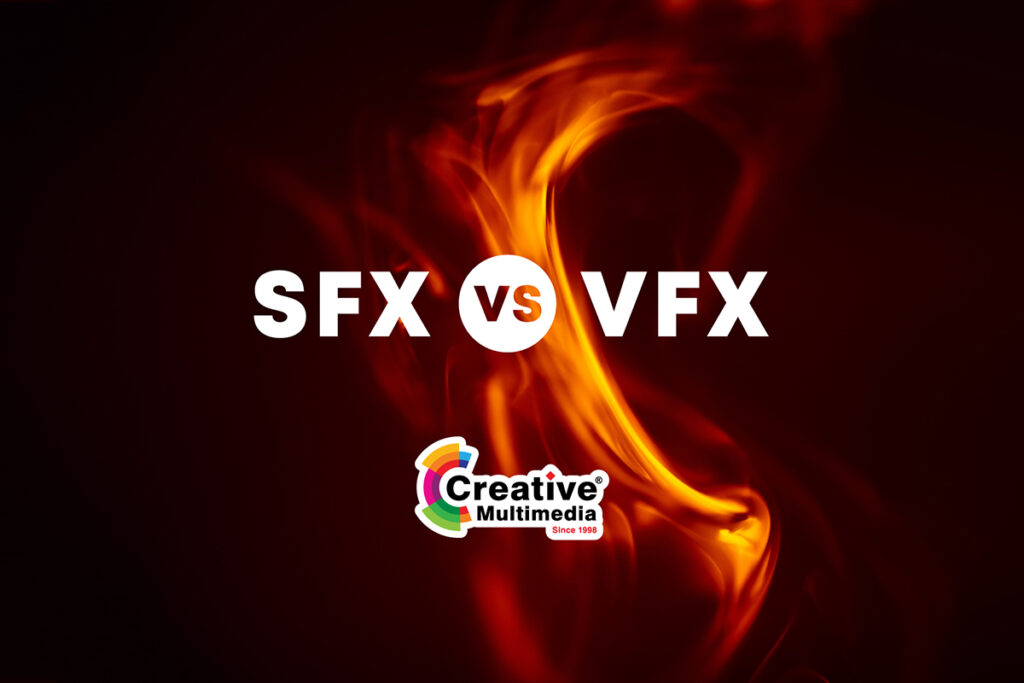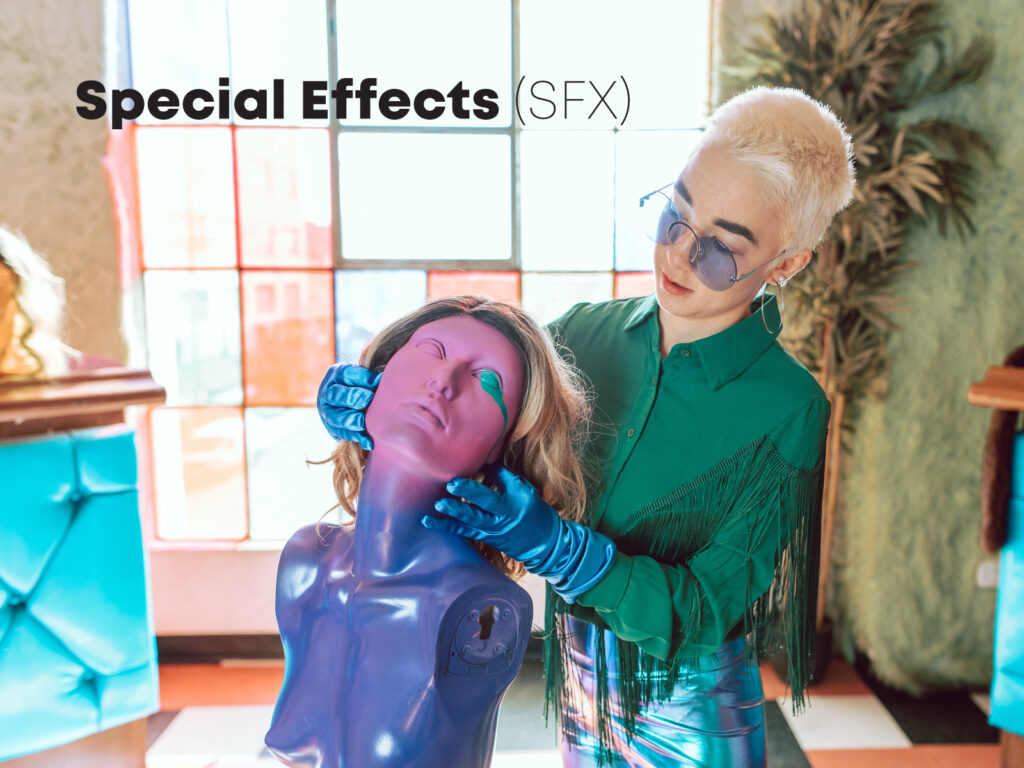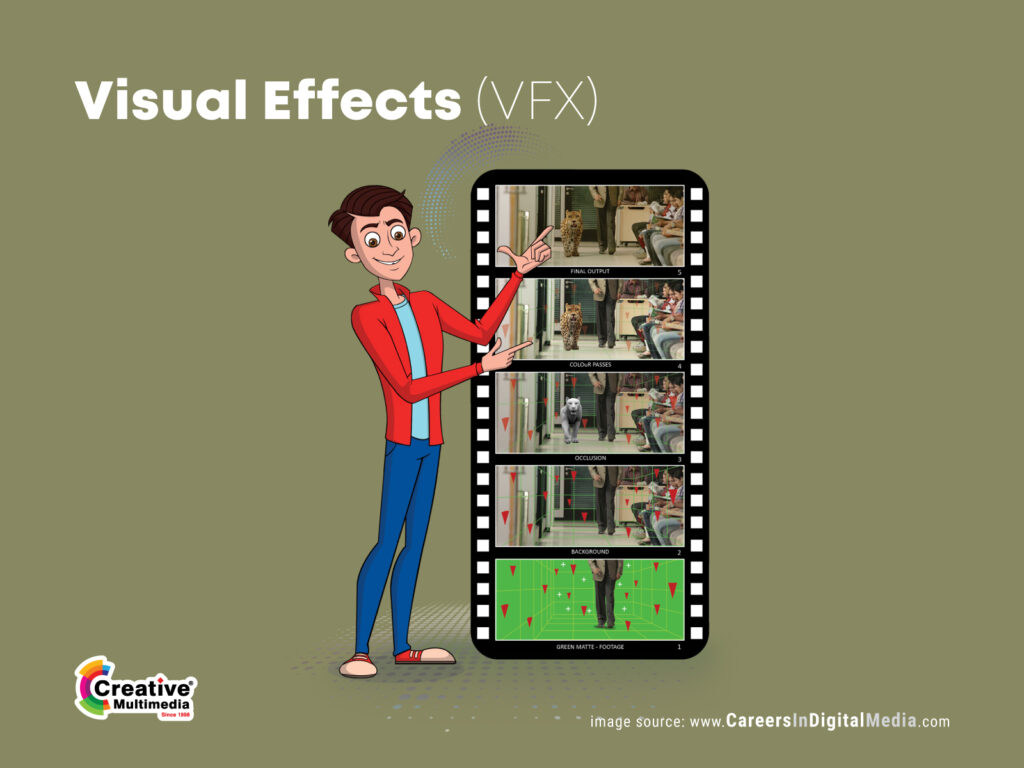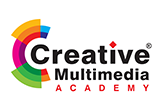India's largest Animation, VFX, Web & Graphics Academy
India's largest Animation, VFX, Web & Graphics Academy

2023

It’s common to use the terms Special Effects (SFX) and Visual Effects (VFX) interchangeably or confuse one with the other. While in most instances, they are misunderstood to be one and the same, there is in fact, considerable difference between them in terms of purpose, precedence, technique, application, and results
At the core, special effects are live, physical effects created on set during film shoot while visual effects are digital effects created during post-production and integrated with the film footage. Though SFX and VFX are mostly used in the context of films, their applications have expanded beyond the realm of cinematic entertainment to other sectors such as education, training, and healthcare.
Let’s try and understand SFX and VFX better. Here’s a detailed look at the aspects that differentiate both these effects so vital to the craft of modern filmmaking. The following is an extract from the highly successful career guide “Exciting Careers in Digital Media” published by one of the top vfx colleges in India.
SFX vs. VFX: SFX (Special Effects) and VFX (Visual Effects) are two of the most confusing terms in the filmmaking lexicon. To the uninitiated, they have the same meaning, which is not correct. This is partly because they share the same suffix (effects), and partly because, on a basic level, they have a common purpose (effects in filmmaking), and also because this misguided perception about their similarity has been passed down for generations within amateur circles, lending credence to the misunderstanding. In reality, SFX and VFX are far from interchangeable and relate to different methods. This is an important topic that is articulated and dealt with extensively in professional vfx courses. Here below is an attempt to demystify this confusion and evoke clarity with appropriate examples.

Special Effects are those effects that are performed/created and recorded during the production (shooting) stage on a film set. SFX are used to create an imagined event or simulate a real event (as per the story) in a controlled environment.
SFX are broadly categorized into: 1. Optical effects, 2. Mechanical effects, 3. Pyrotechnics and ballistics, 4. Stunts, 5. Atmospheric effects, 6. Makeup, prosthetics, and special suits
1. Optical Effects: Optical Effects, also called ‘In-Camera’ effects are created using cameras and lenses. This may include techniques such as multiple exposures and creating mattes for the background and foreground, etc. A good example (in old movies) is the moving imagery added as a background to show that a car is moving. The actor would be on a static, mock-up car as if driving it, and in the background, moving imagery would be added on a screen using rear projection. The camera then shoots them together to get the whole picture, thus producing the effect of movement. A flying object suspended on thin wires that is invisible in the movie is another example of SFX.
2. Mechanical Effects: Mechanical Effects are created with the help of specialized mechanical rigs. These mechanical rigs are designed and created as per the demands of the scene/story. They include puppetry and animatronics along with scale models, which are animated by the puppeteers standing behind them. These are shot together and shown as if the character is moving in the scene. An example of mechanical effects is the robot character in the film ‘Enthiran’. Mechanical effects are not limited only to animatronics and puppeteering, they include robotics, car stunt rigs, and wire rigs, etc., that help the actors or props move along or fly in the scene.
3. Pyrotechnics and Ballistics: Effects such as an explosion, fire, glass-break, gunshot, bullet wounds, and blood splatter are all common examples of pyrotechnics and ballistics used frequently in filmmaking.
4. Atmospheric Effects: Fog, storm, rain, and snow are all examples of atmospheric effects artificially created for use in films.
5. Makeup, Prosthetics, and Special Suits: Realistic accident wounds, bruises, scars on face/body, etc. in films are created using makeup, while a deformed face, an alien creature, or polio-affected arm, etc. are done using prosthetics. Special suits are designed for unique characters such as aliens, superheroes, etc.
6. Stunts: Stunts involving a car chase or an action episode are integral to films. Stuntmen choreograph these physical effects and risk themselves to perform these enthralling stunts. Audiences cheer when their favourite stars leap from a building or perform a wheelie on a bike. These stunts are mostly performed by the body double of the actors.

Visual Effects are those effects that may be difficult, dangerous, impossible, or too expensive to create in the real world, and so, they are created virtually using CGI (computer-generated imagery) during the post-production stage or after the film shooting is completed. Today, most films use VFX. VFX are broadly categorized into: 1. Visible effects, and 2. Invisible effects
1. Visible Effects: Visible Effects are effects that appear real and seamless in a film scene, but it is evident that they are created and not original. Visible effects are produced using a range of complex computer graphics techniques such as green screen and 3D. A good example of visible effects is the T-rex in the Hollywood film ‘Jurassic Park’. While the T-rex does not exist in the real world, the movie uses visible effects to create and show them prowling around realistically. The Avengers franchise is another example of visible effects. Most of the characters and environment in all the films of this franchise were created using a computer.
2. Invisible Effects: Invisible Effects include visual effects that are seamless and are intended to go unnoticed in a story. This particular type of VFX is mainly used to help drive the story forward while engaging the audience and keeping them focused on the story rather than actions. Just as with visible effects, invisible effects too are very complex and require multiple workflows to be created. Extending a set to create a vintage look for a film, adding a wristwatch to the hands of an actor or putting a teardrop in the eye of an artist for an emotional scene are all examples of invisible effects that add value to the visual narrative rather than glamourize them.
VFX involves many art forms such as traditional arts (miniature models, stop motion technique), digitally-created matte painting and Computer Generated Imagery (CGI).
a. Miniature Models: Miniature Models: Scaled-down models shot against a green/blue background and integrated with live-action footage are examples of miniature models as seen in the film ‘Star Wars’ in which the spaceships are miniatures.
b. Stop Motion: This traditional form of animation with a history as old as cinema has been one of the most common forms of VFX. It involves capturing a sequence of photos of an object by incrementally moving it, and then when played sequentially, they create an illusion of motion. Popular examples include the old King Kong movie, Star Wars series, or the classic films by Georges Melies – the pioneer of VFX
c. Matte Painting: These are the seamlessly painted environments/backgrounds or sets as visualized by a director but may not be present on the film set at the time of the shooting. Traditionally, they were hand- painted on glass plates and combined with live-action footage to depict a vast environment. Matte paintings are mainly used to create set extensions and are now done digitally in both 2D & 3D.
d. Computer-Generated Imagery (CGI): It is the art of using a computer to create virtual images for films, games, etc. This includes both the 2D & 3D graphics process for adding elements in the VFX process. Today, VFX is mostly done with CGI involving complex workflows and technologies such as Motion Capture (MoCap). Examples of CGI: realistic humans and physical simulations such as explosions and water splashes.
Hope this article has helped you appreciate the multiple differences between special effects and visual effects. If you are interested in a career in this field, choose the best vfx institutes that offer industry-centric training to realize your dream.
© 1998-2025 Creative Multimedia® | All rights reserved
